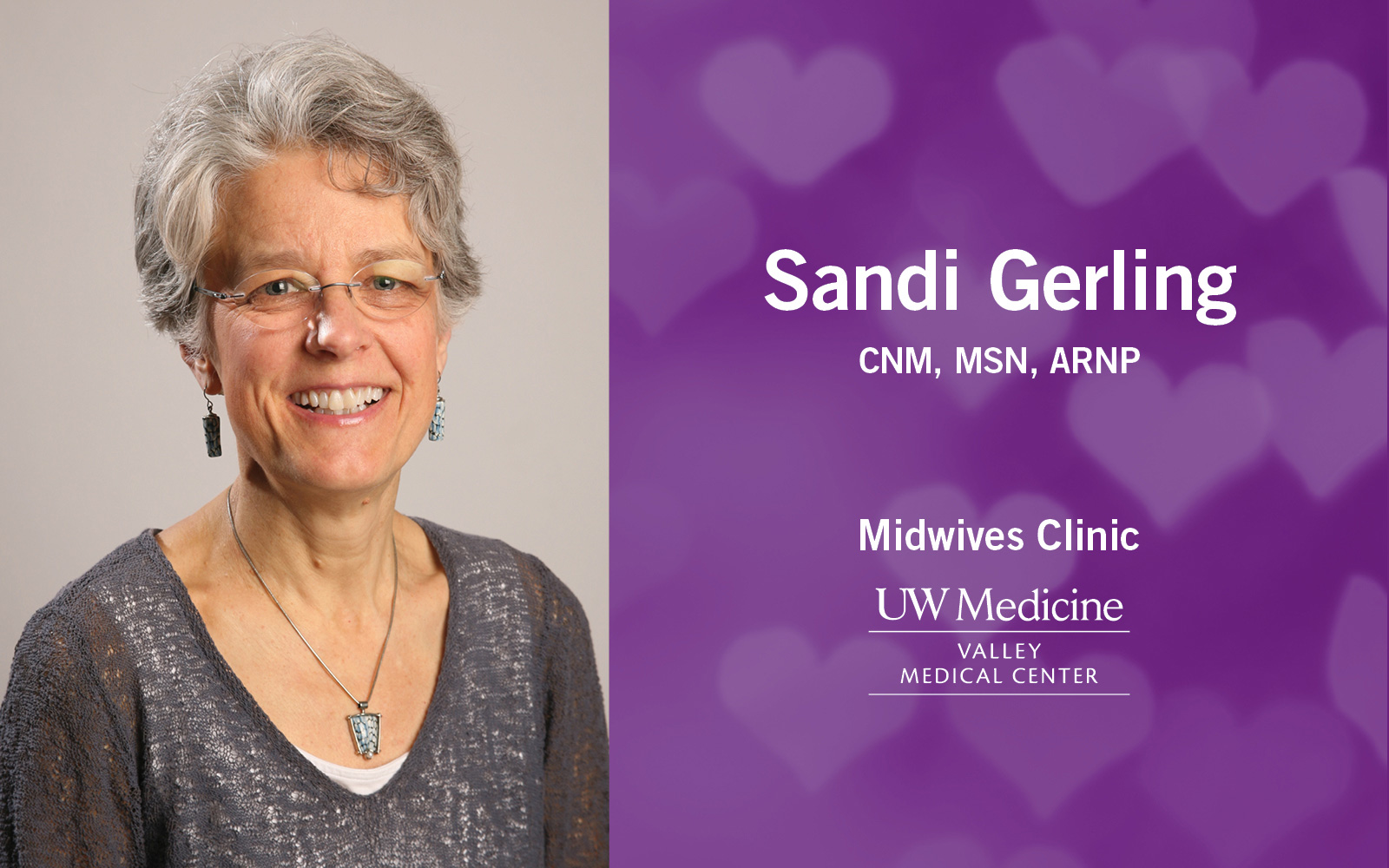
Women have historically experienced many challenges during the birthing process and developing an individualized birth plan is important to many women as they consider starting a family. Valley Women’s Healthcare Clinic offers services and support during the birth process with Certified Nurse-Midwives. Midwives are trained to provide prenatal care, as well as support from early labor through delivery of your baby. Sandi Gerling, provider at Valley’s Women’s Healthcare Clinic, shares her story below about her journey to becoming a midwife and why women’s health and supporting women in this way is so meaningful to her.
My Path Toward Nurse-Midwifery
Submitted by Sandi Gerling, CNM, MSN, ARNP
One beautiful spring day in the early 1980s I found myself in a storefront in West Berlin with nine other young women I didn’t know, all of us clutching our new cervical caps. I had answered an ad for women-controlled contraception. A cervical cap is what it sounds like: a little silicone cap for the cervix, meant to seal it away from sperm. There were many interesting aspects of this experience, but the one that likely had a large impact on my life was the hour or so we spent role-playing how we would get those gadgets in the right place at the right time. We all had had experience with guys who had all sorts of reasons why contraception was unnecessary. We volunteered lines we’d heard, then we crafted retorts to them. This was the most fun I’d ever had in health education. That giggly group of young women, none of whom I’d ever see again, have followed me in spirit throughout my life, unfailingly supportive sisters whenever I needed their guidance.
I was not a midwife then; I hadn’t even heard of midwifery as a modern profession. Growing up in the 1960-1970s, I couldn’t see a place for me in the healthcare setting. My interactions in healthcare environments had reinforced a lack of empowerment for myself, for the women dear to me, and from my point of view, it seemed also for the women working in healthcare. Where were the studies that included us? Where were the providers who looked like us, negotiated our place in society and in our homes, while also negotiating the effects of constantly changing hormonal cocktails our bodies served us in a monthly rotation?
My first career step was in movie-making. I figured that folks would see my movies and come away from the experience understanding how to live better lives, in peace and harmony in a more just world. It took me about a decade of working on movies of questionable cultural value to figure out that peace and harmony are not blockbuster draws. This was not going to be an avenue toward social justice! Aside from the movies I worked on, there is something about sitting in the dark watching somebody else’s message that simply won’t work as effectively to activate people to improve their lives.
What works better is the kind of communication we had in that storefront. That is the essence of midwifery communication. “Midwife” means “with woman” –engaging in a relationship of equals. At the age of 35, I returned to school for an education in nursing and then in midwifery. The knowledge I continue to collect can be of use to women as they consider their health needs surrounding contraception, sexuality, pregnancy, birth, breastfeeding and basic primary care. But chief among my skills is prioritizing listening. Because each woman brings their own expertise in their own body, their own family and culture—all of which will impact their health. Given the space and time to brew together, a good listener with some knowledge in health and a woman seeking solutions to health conundrums can make good, permanent progress along those lines. That was the function of the village midwife, and it is what modern midwives also offer.
Women’s healthcare has long been an overlooked, under-researched medical specialty, which sometimes cruelly exploited women and at best has been under-resourced. Midwifery was almost eliminated as the medical establishment commandeered regulatory power, and the Black, immigrant and native women leaders of their communities, who had traditionally provided care to them, were sidelined.
Now, as women assume our rightful place in society, this is changing. Moving into the future, a more diverse healthcare workforce is enabling different ways of problem-solving, expanding the horizon on everything from what will be researched to how that knowledge will be implemented. As a midwife, I am proud to be a part of helping women to find their power and practice using it for their own health and for the health of their families.
Is a baby coming in 2021? Would you like to learn more about care offered? Check out the Valley Birth Center for more information, view a virtual tour of the Birth Center, and learn more about the midwives at Valley Women’s Healthcare Clinic.

